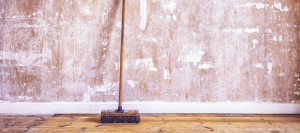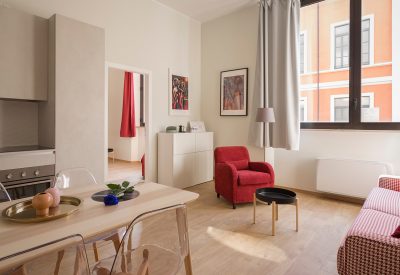From the lightest of stipples to the heaviest of Mediterranean swirls, the texture on your walls and ceilings does a lot to create your home’s specific look and feel. It can also be a fun way to change your home’s appearance.
If you’re starting with new drywall, the texture is the last thing to be applied after all the seams have been taped and then covered and smoothed over with successive coats of drywall cement until the walls appear seamless. For existing drywall that you’d like to change the look of, you have a couple of options.
You can sand off the existing texture until you’re back down to smooth walls, or you can apply additional drywall cement over the existing texture, sanding it as necessary after it dries to get a smooth surface.
With either technique, it’s important that the walls be smooth and sealed, so drywallers prefer to prime the drywall prior to applying the texture. The primer coat seals both the drywall cement and the porous paper surface of the drywall, and helps to point up any flaws in the topping coats. Priming can be done with wallboard sealer or with a primer — talk with your paint store or drywall supplier for their specific recommendations.
Texture options aboundNow that you have a smooth surface to work on, you have a lot of options for what the texture should look like and how it should be applied. Before you do an entire wall or room, be sure to look at some samples, or do some experimenting on scraps of drywall or other material to perfect your technique.
1. Machine application: Professional drywalls texture surfaces using a trailer-mounted texturing machine. Powdered texture material is poured into a hopper and mixed with water, then air pressure is used to push the thick liquid texture though hoses to a spray gun, and out through a nozzle.
 3 essential tools that will 10X your real estate marketing
Smart landing pages, a synchronized database and automation generate results READ MORE
3 essential tools that will 10X your real estate marketing
Smart landing pages, a synchronized database and automation generate results READ MORE
By changing tips in the nozzle and working with the consistency of the mix and the amount of air pressure, an experienced drywaller can create anything from very light splatters, called an “orange peel,” to a thick, heavy texture, called a “heavy knockdown,” and lots of textures in between.
For large areas, a professional texturing rig will give the most uniform appearance in the shortest amount of time, but it’s not for the do-it-yourselfer.
2. Hopper gun: A hopper gun works on the same principle as the professional texture machine, but on a much smaller scale. Texture material is placed in a hopper, and an air compressor is used to blow air through a nozzle, which in turn sprays the thick liquid texture onto the surface. Once again, changing the nozzle, air pressure and texture consistency will change the look of the texture. Hopper guns, with or without an air compressor, can be rented or purchased fairly inexpensively.
3. Spray cans: For patches and other small areas, you can buy premixed texture material in spray cans. It works well for orange peel and light to medium knockdown, but it takes a little bit of practice, so be sure to try it out first before using it on a patch. Due to the cost, it’s suited for small areas only.
4. Paint-on texture: If you like a light texture, you can simply paint it on, which lets you take care of your texture and your paint job at the same time. There are texture additives, which are similar to fine sand, that can be added to some types of paint.
You can also use a stippling roller, which sticks to the paint a little bit as you apply it and causes the paint to have a slightly bumpy texture as it dries. Stipple finishes typically most closely resemble the plaster finishes found in a lot of older homes.
5. Hand-applied texture: Here’s where you can let your creativity have full reign! Hand-applied textures are done with regular drywall cement or special texture compounds, usually somewhat thinned down to make them a little creamier and easier to work with. They can be applied in just about any way and with just about any tool that suits your imagination and the type of finished look you’re hoping for.
For example, you can thin the compound down, dip a stiff paint brush or even a whisk broom into it, then flick the bristles with a stick to splatter the compound.
Another method is to dip a round brush into the compound, then dab or swirl it onto the surface.
To achieve the Tuscan or Mediterranean look, apply a slightly thicker compound in a more sweeping motion, using the edge of a drywall knife or a trowel. Adding fine sand to the mix will cause the trowel to skip slightly, again changing the look of the finished texture.
For any of the hand-applied textures, lean a sheet or two of drywall against a wall, and put some plastic sheeting on the floor. Try applying the compound to see what it looks like, then scrape it back off before it dries. This will give you a large area to practice on and will give you realistic results inexpensively, before you commit to an entire room of something you might not like.
Editor’s note: This article was originally published on Inman in 2010 and has been updated.
Source: click here




















